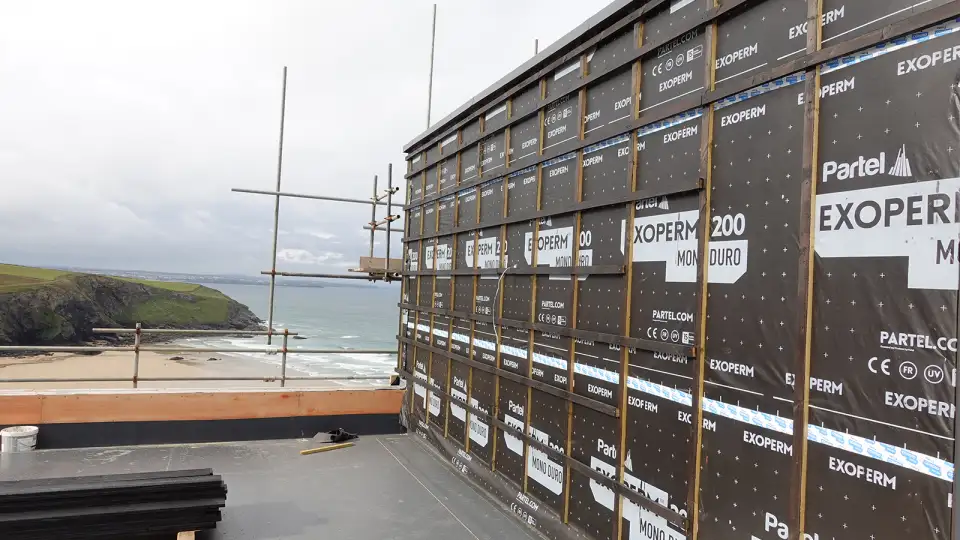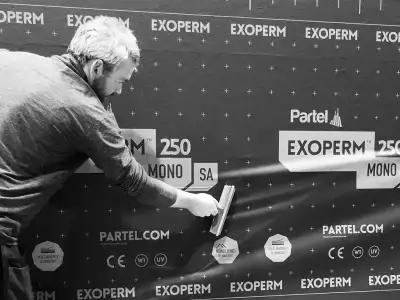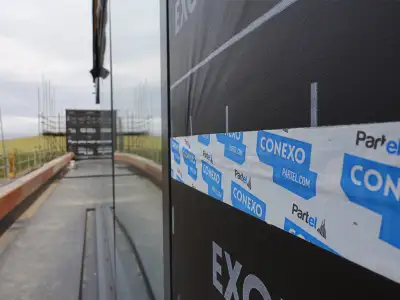Ongoing population growth and urban sprawl are driving housing development into areas that were once home to wildlife and forests, expanding what is known as the Wildland Urban Interface (WUI). WUI areas are where the built environment and wildfire-prone vegetation/forested areas meet, and approximately 8 million homes in WUI designated areas were built in the United States from 1990 to 2010. Though the pace of construction slowed from 2010 to 2020, the decade still saw the construction of 2.6 million new homes in WUI areas.

Fire Safety & Energy Efficiency in Building Envelopes
Given the increasing number of homes in close proximity to wildfire-prone areas, the increase in wildfire frequency, and the predicted extension of the fire season, there is increased consumer demand for enhanced fire resiliency in WUI areas and improved resilience to smoke events like those that overwhelmed much of North America last year. As this blog will explain, improving resiliency to both wildfires and excessive smoke goes hand in hand with improving a building’s energy efficiency.
Specifically, we’ll explore:
· The difference between active and passive systems.
· Passive House principles and building envelopes.
· Passive House principles and efficiency.
· Passive House principles and fire safety.
· How Partel’s line of advanced fire-rated membranes can improve energy efficiency and fire safety.
Active and Passive Systems
Fire safety and energy efficiency seem like two vital but distinct considerations when designing and constructing a building, especially when one speaks of active systems. Active systems can be thought of as systems that require either an automated or manual system to operate. With respect to fire safety, this may include fire extinguishers, sprinkler systems, or even smoke alarms. Meanwhile, active energy efficiency measures typically revolve around innovative technologies that help to automate mechanical systems and optimize energy use.
As the name suggests, passive systems are more or less stationary. They are built into the very fabric of the building. Within the world of fire safety, passive systems may include the inclusion of fire-resistant building materials to prevent fire penetration; simplifying the form factor of a building to mitigate the risk from firebrands; or improved air sealing and enhanced filtration for mechanical systems to keep out smoke.

Passive House Principles and Building Envelopes
Passive House design and construction is most commonly framed as a way to use passive systems to create more energy efficient homes. Passive House methodology is grounded in five principles:
· Continuous insulation
· Airtight construction
· Thermal-bridge-free detailing
· High-performance windows
· Mechanical ventilation with heat recovery
These principles largely focus on the envelope of the building. More than simply defining the perimeter of a building, the building envelope is a complex system that serves as the point where the indoors and the outdoors meet and interact. The more permeable and poorly insulated the building envelope is, the more the outdoors can influence what happens indoors. The more airtight and better insulated that envelope is, the more the conditioned space indoors can resist the influence of the outdoors.
Passive House Principles and Efficiency
Using high-performance windows and doors while making buildings extremely airtight and well-insulated ensures that the conditioned spaces within the building envelope can be cooled and heated with minimal energy use—often with no more than onsite renewable sources of energy. Mechanical ventilation provides a steady supply of fresh air, while heat recovery further minimizes energy use, as the outgoing exhaust air conditions the incoming fresh air. Thermal-bridge-free detailing further enhances performance while also preventing the buildup of condensation, which can lead to mold growth. When these five principles act in concert, the result is a home that is not only efficient and durable, but remarkably comfortable.
Passive House Principles and Fire Resilience
Passive principles not only create more efficient and healthier buildings; they also create buildings that are resilient in the face of smoke events and fires. As alluded to above, the conscientious design decisions that are made to eliminate thermal-bridging lead to simplified form factors, which not only reduces the surface area of the structure but gives embers fewer points of entry. Meanwhile, a combination of airtight construction and high-performance windows will keep smoke and particulate matter from penetrating the building’s envelope, while a combination of mechanical ventilation and air filtration will ensure that only fresh air is admitted into the home.
Partel’s EXOPERM Line
Project teams have to balance a lot of factors when deciding on materials choices, even when they are building to Passive House standards—fire safety is only one of them. Additional considerations may include costs, aesthetics, performance, and more climate- or site-specific factors that can influence how the envelope is assembled. For example, a wall that is designed for a hot and humid climate like New Orleans is going to have a dramatically different wall assembly from a temperate and humid climate like Vancouver.
Partel’s line of EXOPERM membranes, including EXOPERM MONO DURO 200 and EXOPERM MONO 250 SA, offers builders a range of performance metrics while providing exceptional durability and fire resilience. Meanwhile, Partel’s numerous tapes, including their VARA and CONEXO lines, complement these membranes to enhance overall building performance.
EXOPERM MONO DURO 200
Partel’s EXPOERM MONO DURO 200 is a diffusion permeable polyurethane membrane that is installed on the cold side of insulation and is suitable for façade walls, roofs, and decking underlays. It is highly vapor open with an Sd value of 0.12m and an air permeance value of 0.01m3/(m2h), as well as a fire classification of B-s1, d0, according to EN13501-1, meaning it has limited combustibility and only marginally contributes to fire spread; that it produces minimal smoke in the event of combustion; and that it does not produce any flaming droplets or particles in the event of a fire.

EXOPERM MONO 250 SA
The EXOPERM MONO 250 SA is a self-adherent breather membrane that serves as both air barrier and a vapor management system. It is designed for façade wall and roof applications that is applied on the cold side of insulation. With respect to performance, it has an air permeance value of <0.001m3/(m2h) and an Sd value of 0.26m to ensure a strong, airtight connection in conjunction with excellent vapor permeability. When affixed to a non-combustible material, the EXOPERM MONO 250 SA also has a fire classification of B-s1, d0.

VARA Seal Tape and CONEXO Tape
Both VARA and CONEXO tapes can be adhered to Partel interior and exterior membranes, as well as virtually any building material on a jobsite (concrete, plaster, plywood, wood, steel, aluminum, and other vapor control layers). These tapes create permanent and airtight seals at membrane overlaps, as well as door and window connections, even in damper climates.
The VARA line has an Sd range of 0.4m to 30m and includes VARA SEAL AIRTIGHT & WINDTIGHT TAPE, VARA SEAL X SL, and VARA SEAL SL. The latter is a certified Passive House component.
CONEXO MULTISEAL SL AIR & WINDTIGHT TAPE and CONEXO MULTISEAL AIR & WINDTIGHT TAPE both have an Sd of 35 and vapor permanence of 0.08 US Perm. Additionally, they are both certified Passive House components, have extremely low VOC ratings, and have been awarded Ecolabel Emicode EC1PLUS.
Conclusion
Passive House principles are not just about energy efficiency and comfort. They can also create buildings that are more resilient in the face of wildfires and extreme smoke events. These principles are also amenable to a variety of climates, especially when project teams have access to a suite of high-performance components like those offered by Partel.
To learn more about Partel and their numerous brands of membranes, tapes, and accessories, you can visit their site here.